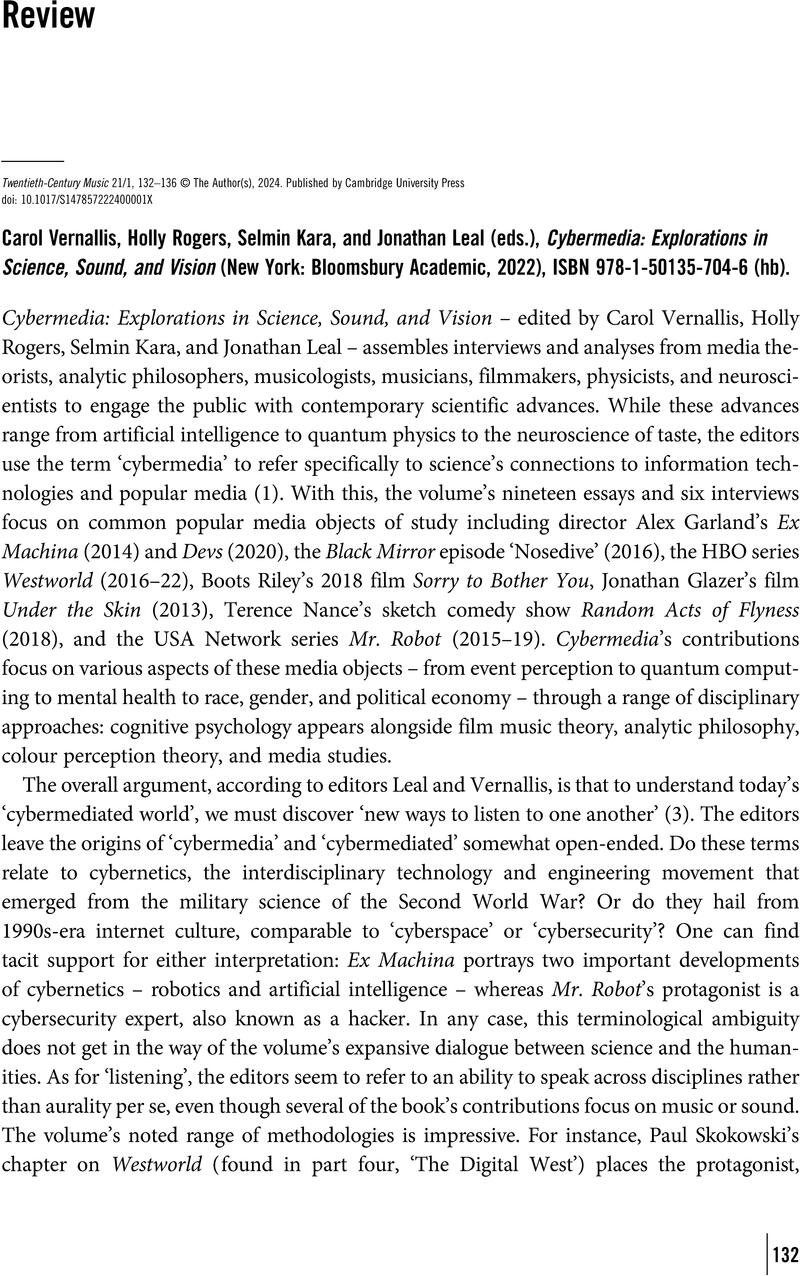No CrossRef data available.
Published online by Cambridge University Press: 14 February 2024

1 Key works of this historiography include: Hayles, N. Katherine, How We Became Posthuman: Virtual Bodies in Cybernetics, Literature, and Informatics (Chicago: University of Chicago Press, 1999)CrossRefGoogle Scholar; Wolfe, Cary, What Is Posthumanism? (Minneapolis, MN: University of Minnesota Press, 2009)Google Scholar; Braidotti, Rosi, The Posthuman (Cambridge: Polity Press, 2013)Google Scholar.
2 One commentator designates ‘Nosedive’ as ‘the episode of Black Mirror that is most obviously about the present’. Sculos, Bryant W., ‘Screen Savior: How Black Mirror Reflects the Present More than the Future’, Class, Race and Corporate Power 5/1 (2017), 1–7, at 2CrossRefGoogle Scholar.
3 Brooker, Charlie, Jones, Annabel, with Arnopp, Jason, Inside Black Mirror (London: Ebury Press), 243Google Scholar.
4 Other media scholars have discussed ‘Nosedive’'s political–economic critique in relation to feminized labour. See Greer, Erin, ‘Wages for Face-Work: Black Mirror's “Nosedive” and Digital Reproductive Labor’, Camera Obscura 105 34/3 (2020), 89–115Google Scholar.
5 For an antidote to these tendencies, see the wonderful Christian Grüny, ‘Listen! An Old Idea in a New Guise’, Cultural Critique (forthcoming).